Submit your article of up to 500 words in length, subject to editing for clarity and brevity (please note: I run only original articles that have not appeared on any Web site or in any publication and I can’t use anything that looks like a commercial pitch). I’ll use a phony name for you unless you tell me otherwise. Thanks for sharing!
Note: we asked two consulting company executives to respond to a reader’s question: “Most physician offices say they are waiting for their EMR vendor to let them know how their systems will handle ICD-10 before they do any of their own prep work. Is this common? Vendors seem to be quiet on the subject.”
Preparation for ICD-10
By Peter Butler

From what we are seeing and hearing from healthcare organizations we work with, in general, the larger IDNs and healthcare organizations are addressing ICD-10 readiness through appointed committees to head up the planning for ICD-10. It is the smaller physician medical groups that are taking a “wait and see approach” to ICD-10 and vendor readiness.
In one conversion with a medical group CEO who is also a practicing pediatrician, I was told that his concerns as it relates to ICD-10 were minimal. His view was it was mostly an IT issue. There is a small subset set of ICD-9 codes he uses regularly today and with ICD-10 that list will grow slightly, but nothing that will require a major amount of education or training.
We’ve seen many of the major IT vendors saying they are investing in ICD-10 readiness today. They are still doing their own due diligence internally before communicating details and specific plans with their customers which is why your reader may not be hearing much from the vendors.
I was recently visiting with a vendor who has made ICD-10 and Meaningful Use their top priorities and slowed other R&D efforts to focus more resources on these two initiatives. We believe that the majority of vendors will deliver ICD-10 compliant upgrades in reasonable timeframes.
For providers, taking a “wait and see” position is dangerous, as ICD-10 codes will affect all services in all settings; and therefore all reimbursement. Providers must begin to inventory all of their vendor systems to determine their ability to be able to accommodate the EDI v5010 enhancements and expanded character sets. Workflows need to be inventoried so organizations can understand where testing and mitigation need to be planned. There are many constituents (i.e., insurance companies, labs, etc.) that also need to be managed and contracts reviewed to minimize the impact to provider reimbursement.
ICD-10 needs to be viewed more broadly than just complying with government regulations. The ICD-10 code set provides organizations with new opportunities to enhance their revenue stream. The key is to begin now and prepare a clearly defined transition plan.
Peter Butler is president of Hayes Management Consulting of Newton Center, MA.
Preparation for ICD-10
By David Vreeland

I’d say that the burden of implementing CMS V5010 and ICD-10 is largely going to be borne by the vendors, but it’s always the responsibility of the organization’s leaders to ensure that the organization is compliant with such regulations.
In a hospital, there are typically many more information systems in production and so the burden on the organization is larger because they need to responsibly ensure that they have a handle on all those vendors and determine what the plan is for accommodating the change to these new code sets across the various IT providers. They also will likely need to have a testing plan in place for interfaces, downstream system compatibility, etc.
On the ambulatory / physician practice side, I’d say that the approach is the same, but the complexity is likely significantly lower. But simply waiting until the vendor takes action is ill-advised.
As a physician, I’d be requesting information from my vendors about the development plan and timeline for these enhancements, and if the practice operates a practice management system that is provided by a different vendor than the EMR solution, I’d be looking at moving to an integrated solution. Most vendors we work with have a plan and timeline either in mind or on paper by this point, and it’s appropriate to ask for it.
David Vreeland is a partner with Cumberland Consulting Group of Brentwood, TN.
Back to School – For a Master of Biomedical Informatics Degree
By Jeremy Harper

With the recent influx of government funding in healthcare, educational opportunities abound. I have been lucky enough to receive a scholarship to Oregon Health & Science University’s (OHSU) Healthcare Informatics program. My passion is to work with healthcare organizations to ensure patient safety and innovative technologies. This article will cover how I found the OHSU opportunity and why I decided to attend a program that required moving to the other side of the country.
An elevator story about my personal background is that I attended The Ohio State University’s business degree program from August 2003 to December 2006, receiving a BS in General Business. I worked at Epic Systems from February 2007 to April 2009 and discovered a passion for healthcare IT.
After I left that company, I took my GRE, where I scored well but not brilliantly. I applied and was accepted to three graduate schools for healthcare informatics (Capella, UIC, UW Milwaukee) but I failed to procure funding, so I accepted a full-time position at an amazing hospital as a systems analyst. A month after starting, I transitioned to being the secondary interface engineer and over the past year spanned both positions.
While I found my work environment to be an amazing experience, I had a passion for education and furthering my career. To do this, I needed either to gain further professional experience or consider specific degree programs. I made the decision that I would find an online program that would allow me to continue to gain real world experience while furthering my education and qualifications.
To this end, I researched available programs online and sent a letter to Mr. HIStalk to ask which programs he could recommend. He came back with a number of programs, among them OHSU as one of the leading online programs. I went to their website (along with the others) and found that OHSU had received a grant that would fully fund a one-year online certificate program and a few masters’ degree students. I applied and was accepted to the master’s degree program.
That application was not instantaneous nor was it free. However, spending $358.72, (Including the A&P online course I took to be eligible for the program, not including the sunk cost of my GRE from 2009) was a small price to pay to have a fully funded degree program with stipend. The program itself will take six quarters, two of which will include an internship. This fall, I am taking courses in Java, scientific writing, and introductions to biomedical informatics, biostatistics, and healthcare. This scholarship provides me the freedom to focus solely on my education rather than needing to balance it with work.
There have been opportunity costs. Nothing is free, even on a scholarship. The highest costs are the same anyone attempting a work/life balance will have to face. My personal situation means I have a fiancé 2,800 miles away in Ohio. I will have limited time to see her until we are married next year. I left a position where I enjoyed my co-workers and found the work itself exciting and fun. I moved with only what could fit in my Toyota Corolla (far more and far less than you’d expect). I have needed to find a roommate because of my budget. I have needed to budget my funds closely to assure I will be able to attend school. All the type of sacrificed anyone going back to school will have to consider.
If you are considering further education, now is the time to look into opportunities. OHSU, for example, will be funding hundreds of more certificate program students, leaving those students half way to receiving a MBI degree from the program. If you visit the ONC website, you can research and find additional schools that have been funded. The ONC has also funded community colleges around the nation for a workforce re-education model that will put folks through approximately a nine-month program educating them on healthcare informatics.
Jeremy Harper is a student at Oregon Health & Science University of Portland, OR.
Note: the following original article exceeds the usual word limit, but was valuable enough for its content and citations that I thought it was worth running intact.
Customer Relationship Management in Healthcare
By Lindsey P. Jarrell
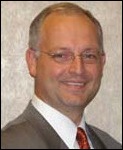
Consumerism is playing an increasingly important role in healthcare, one that hospitals need to address in order to deliver the level of service that patients are starting to expect. In fact, according to a 2009 survey of healthcare consumers by the Deloitte Center for Health Solutions, consumerism is such a powerful force in healthcare that it is a “defining characteristic between its past and its future that will impact every stakeholder’s value proposition and business models. Consumerism is not a fad; it is a trend of enormous significance.”[1]
Today’s consumers are highly attuned to the level of service in healthcare and their attitudes and behavior reflect this. Roughly one in four has switched or has considered switching hospitals, clinics, or doctors because of a negative customer service experience.[2] Slightly more than half of customers report that they choose hospitals “based on whether they believe employees understand their needs.”[3]
Consumers have many choices when selecting their healthcare providers and they are beginning to exercise their options. Almost one-third report comparing doctors before choosing one and 15% compared hospitals.[4] Unfortunately, healthcare consumers believe the system is performing poorly: 76% percent grade the system as “C” or below.[5]
Customer relationship management (CRM) is an approach used in many industries that focuses on addressing the unique needs of customers to increase value for both the customers and the organization.[6] CRM software is currently used in only about 15% of hospitals, but it is a growing trend.[7] It can help streamline operations to handle the multi-headed juggernaut of attempting to compete for lucrative customers, control costs, improve profitability, and foster a customer-focused cultural climate.
Today’s Healthcare Consumer
A growing number of consumers want to be actively engaged in their health. They compare doctors, hospitals, medications, devices, and health plans; explore alternatives to conventional approaches; and spend money to achieve their health goals.[8] They want to control their health information and prefer providers who use Internet-based tools to augment care.
The 2009 Deloitte survey showed that 57% want a secure Internet site that would enable them to access their medical records, schedule office visits, refill prescriptions, and pay medical bills. Forty-two percent of health care consumers want access to an online personal health record connected to their doctor’s office, one in five would switch physicians to obtain such access, and consumers are less concerned about privacy and security issues than in the past,.[9],[10] Many (62%) believe that hospitals vary with respect to quality.
Because they are increasingly sensitive to errors, poor service, and lack of useful tools that would enable them to navigate the system more effectively, they are receptive to innovations that offer greater value, better service, higher quality, and lower costs. What’s more, they embrace innovations that enhance convenience, personalization, and control of their personal health information. Consumers, especially those who are younger, are willing to try new service and change providers in order to obtain better value. They are highly receptive to technology that eliminates redundant paperwork and unnecessary tests and saves time and money.[11]
Why CRM?
It’s not surprising that consumers are often dissatisfied with their healthcare experience. Today’s healthcare environment is fragmented and complex, with numerous entities controlling access to information that exists, yet is inaccessible to both providers and patients. A lack of integration and workflow impedes the ability to deliver complete, accurate patient information, which has a negative impact on patient satisfaction and quality of care.
In seeking better tools to manage patients across the continuum of care, healthcare providers are turning to CRM software because it offers several components to address these issues. It provides integrated business systems that serve the medical staff, the administrative staff, and hospital stakeholders while also directly serving customers, giving them easy access to their healthcare history and on-demand knowledge of potential remedies.
Effective CRM systems are starting to integrate personal health records with the hospital’s data to provide a system for managing care-related activities, costs, and benefits, and enabling patients to have better online access to enhance the management of their healthcare. The benefits of this approach include:
- The ability to analyze the performance of routine processes over time (such as admissions, discharges, transfers and referrals) in order to eliminate unnecessary steps and increase patient satisfaction.[12]
- Developing customized workflows to automate care coordination activities between provider organizations (e.g. physician office, hospital and home health) which can lead to improved patient outcomes, increased operational efficiency, and reduced costs.[13]
- Proactively managing chronically ill patients (e.g., diabetes and congestive heart failure) to target them with communications about educational offerings and remind them of ways to manage their illness.[14]
- The ability to improve care coordination and reduce the risk of patient readmission.
- Reducing costs by consolidating systems and pooling resources to obtain economies of scale, improving utilization of appropriate healthcare resources and understanding the cost of treatments to drive business planning
- Preventing and mitigating medical errors by integrating CRM data with medical history and clinical data.[15]
- Generating marketing campaigns targeted at specific patient types by combining a knowledge base with scientific analytics and feedback mechanisms.[16]
With the advent of electronic medical records and the infusion of federal stimulus money that is helping to drive the widespread adoption of technology, CRM software may well be the next logical step in the increasing reliance and utilization of IT in healthcare.
CRM Components for Healthcare
Companies such as Siebel Systems, Salesforce, HealthForce and SalesBoom offer CRM solutions that are tailored to the needs of large and small providers. These systems often include the following components:
Integrated Data
In many industries, the majority of revenue comes from existing customers and healthcare is no different: about 80% of annual revenue comes from patients who have previously used the system.[17] Integrating enterprise-wide data is therefore a key component to improving customer service.
An integrated database allows hospitals to collect data, analyze individual needs and preferences, develop relevant messages based on these needs and preferences, and deliver communication through preferred channels (e.g., text messages, e-mails and phone calls). It requires an integrated combination of data and application programs to support analysis, opportunity identification, data mining, and communications management.[18]
Such a system is equipped, for example, to determine which patients are at greatest risk for disease or complications, allowing the hospital to provide appropriate interventions and communications at the right time. It can also help track and improve other processes, such as check-in procedures. The result is a more personalized relationship between providers and patients that increases patient satisfaction.
Customer Care and Recovery
The trend toward consumerism in healthcare means that patients expect to be treated as customers. One in four patients say poor experiences at hospitals or clinics have caused them to use or think about using walk-in centers as an alternative.[19] In its 2008 Hospital Pulse Report, Press Ganey found that the larger the hospital, the lower the overall patient satisfaction rate.[20] Coupled with the fact that the majority of hospital revenue is from repeat business, this means that hospitals need to find ways of increasing customer satisfaction — including rectifying mistakes — so that revenue is not lost.
CRM software solutions can facilitate the collection of patient-related information from a consumer perspective, facilitate complaint management by allowing hospitals to capture, review, approve, and access information about solutions to existing and past problems, and collect feedback data that can be used to improve operations. Feedback also helps mitigates risk in an environment in which government agencies are continually monitoring hospital performance. [21]
Predictive Modeling
CRM software can allow hospitals to predict patients who are at risk for developing certain conditions and identify those already diagnosed who are likely to develop complications, creating an opportunity for preventive interventions instead of more expensive treatments that may otherwise be required for acute episodes or chronic disease.[22] For example, predictive modeling can take into account co-morbidity, severity, frequency, physician, and specialty data to predict the likelihood of a patient with diabetes developing heart disease or the chance of a patient with hypertension developing glaucoma. This translates to earlier disease discovery, better management, improved intervention, and more relevant communications.[23]
Marketing
CRM-driven marketing can allow hospitals to deliver the right message to the right person at the right time. A comprehensive CRM database and analytical software can predict the likelihood of patients to require specific preventive interventions or develop certain health conditions. By leveraging CRM data, hospitals can implement customer-specific outreach to educate both diagnosed and undiagnosed patients.
For example, one hospital implemented a campaign targeted at diabetes patients. This involved mailings that included offers for free glucose screening and nutrition classes, as well as discounted diabetes and cholesterol screenings. The campaign resulted in incremental patients in three categories: patients with a first-ever diabetes diagnosis, patients who used services who had been undiagnosed, and patients who used services who had been previously diagnosed.[24]
CRM software is complimentary to both revenue cycle applications and electronic medical records within physicians’ offices and hospitals. One has only to think of the type and frequency of e-mails from retailers (e.g. hotel chains announcing special deals at exotic locations) that are carefully placed marketing campaigns based on a specific customer’s previous buying experience and profile. The power of using CRM lies in combining data collection, information management and market targeting vehicles to creating a proactive marketing approach that can increase the customer base.[25]
CRM Making a Difference
CRM has been successfully used to help hospitals capitalize on their data to increase patient satisfaction and boost earnings. Today, many hospitals are demonstrating a substantial ROI from implementing a CRM program. Below are a few examples of CRM at work:
- Children’s Hospital and Research Center at Oakland faced declining referrals and revenue stream, incomplete process follow-through, and decreased patient satisfaction. Using a contact center CRM strategy, the hospital saw a 22% increase in overall referrals and a 50% improvement in both patient and referring physician satisfaction levels.[26]
- A group of six Florida hospitals used CRM tools to launch a direct mail campaign that generated $1.9 million in new revenue in three months.[27]
- CRC Health required a platform to manage patient intake, track Web entities, and streamline operations to increase revenue. A CRM system enabled the company’s Web-generated revenue to jump from 4% to 26%. The company can now tie revenue to referral performance, boosting its growth potential. A tool to track web marketing effectiveness indicates to the dollar what is performing and what is not and the system even provides patients with available beds faster. As a result, CRC Health can serve a larger population.[28]
- Cedars-Sinai Medical Center wanted to improve low call-to-appointment conversion rates and patient satisfaction. The hospital designed a comprehensive contact center-based CRM strategy that improved appointment conversion rates from 22% to 48% and patient satisfaction by 42% over the first year. During that time, more than $3 million was generated in incremental revenue.[29]
Challenges, Tips and Insights
Implementing CRM software can be challenging. It needs to incorporate a variety of security safeguards including patient confidentiality and privacy issues as well as HIPAA compliance. A CRM systems can be costly and time-consuming to get up and running.
Naysayers may point to past efforts of hospitals to implement CRM systems that have failed. But the landscape of healthcare is changing, and CRM can be a valuable tool to help hospitals adapt to the trend toward consumerism and transparency. IT capabilities and technological advances have paved the way for more sophisticated second-generation software-as-a-service platforms and CRM has become both more affordable and more user-friendly.[30]
As with any widespread organizational change, enterprise-wide system compliance can be difficult to achieve. Internal resistance can be significant from top executives and administrators at the outset and from medical staff once implementation begins and the system is in place. It is important to develop strategies to assist team members at all levels in the organization in adopting a new CRM program.
When considering the implementation of a CRM program, hospitals should keep in mind that:
- Converting from a patient orientation to a customer orientation requires a cultural re-orientation.
- CRM is not a campaign or a one-time event, but rather an all-out approach to dealing with customers.
- Modifications in the language used in all customer encounters — even billing — can have a profound impact on the perceived quality of services.
- Quality is defined by the customer, not the provider.
Conclusion
Information is the fuel on which hospitals run and they must harness it to both continually improve performance and measure their record against competitors. During the next decade, the healthcare environment is likely to see an emphasis on improving, measuring, and reporting the quality and safety of care, link provider reimbursement to care performance, and demand greater levels of patient service.[31]
CRM technology gives hospitals the tools they need to thrive in today’s increasingly consumer-oriented healthcare market, while improving outcomes and reducing costs. While its implementation poses a number of challenges, installing CRM programs is an undertaking worth pursuing.
Lindsey P. Jarrell, FACHE is co-founder of Source88.
References
[1] Deloitte Center for Health Solutions. 2009 Survey of health care consumers. http://www.deloitte.com/view/en_US/us/industries/US-federal-government/center-for-health-solutions/60ea5a1264001210VgnVCM100000ba42f00aRCRD.htm. Accessed April 13, 2010
[2]Datamonitor. Addressing the challenges of consumer-driven healthcare. Published January 26, 2007.
[3] Datamonitor. ibid.
[4] Deloitte Center for Health Solutions. ibid.
[5] Deloitte Center for Health Solutions. 2010 U.S. healthcare consumerism survey. http://www.deloitte.com/view/en_US/us/Insights/centers/center-for-health-solutions/consumerism/2010-survey-health-consumers/index.htm?id=USGoogle%20Consumerism%20_HC_510&gclid=CO6Premo3qECFYNd5Qod9DjKIw Accessed May 17, 2010.
[6] Glaser J, Foley, T. The future of healthcare IT. Healthcare Financial Management. November 2008.
[7] Higgins, JK. Rx for hospitals: a big dose of CRM. CRM Buyer. http://www.crmbuyer.com/story/healthcare/68758.html?wlc=1274277431. Published November 20, 2009. Accessed April 8, 2010.
[8] Deloitte Center for Health Solutions. 2009 Survey of health care consumers. ibid.
[9] Deloitte Center for Health Solutions. 2009 Survey of health care consumers. ibid.
[10] Deloitte Center for Health Solutions. 2010 U.S. healthcare consumerism survey. ibid.
[11] Deloitte Center for Health Solutions. 2009 Survey of health care consumers. ibid.
[12] Smolke P, Virmani S. Why customer relationship management in healthcare? Presented at: Healthcare Information and Management Systems Society annual conference; February 24, 2008; Orlando, FL. http://www.mshug.org/docs/techforumOrlando2008/Smolke_P_Vimani_S_Closing.pdf
Accessed April 13, 2010.
[13] Smolke P, Virmani S. ibid.
[14] Smolke P, Virmani S. ibid.
[15] Healthcare industry CRM software solutions. www.crm.forecast.com.
http://www.crmforecast.com/healthcare.htm. Accessed April 13, 2010.
[16] Higgins, JK. ibid.
[17] Healthcare relationship management depends on tailored database. www.healthcareitnews.com. http://www.healthcareitnews.com/news/healthcare-relationship-management-depends-tailored-database. Published May 13, 2004. Accessed April 8, 2010.
[18] Healthcare relationship management depends on tailored database. ibid.
[19] Healthcare industry CRM software solutions. ibid.
[20] McKay L. Healing the sick. www.destinationcrm.com. http://www.destinationcrm.com/Articles/Editorial/Magazine-Features/Healing-the-Sick-55461.aspx . Published August 1, 2009. Accessed April 7, 2010.
[21] McKay L. ibid.
[22] Schumacher S. Patient relationship management: streamlined approaches for defragmenting healthcare. Health Management Technology. June 2001; 22(6).
[23] Healthcare relationship management depends on tailored database. ibid.
[24] Hallick J. CRM saves lives. www.destinationcrm.com. http://www.destinationcrm.com/Articles/Web-Exclusives/Viewpoints/CRM-Saves-Lives-60149.aspx. Published January 25, 2010. Accessed April 7, 2010.
[25] Higgins, JK. ibid.
[26] Young T. Hospital CRM: unexplored frontier of revenue growth? Healthcare Financial Management. October 1, 2007.
[27] Higgins, JK. ibid.
[28] CRC health builds custom solutions on force.com to streamline intake process and increase web-generated revenue. www.salesforce.com. http://www.salesforce.com/customers/healthcare/crchealth.jsp. Accessed May 18, 2010.
[29] Young T. ibid.
[30] Young T. ibid.
[31] Glaser J, Foley, T. ibid.


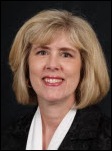


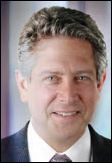

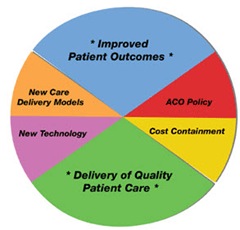



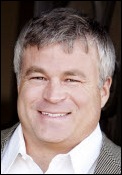
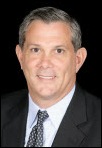



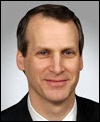
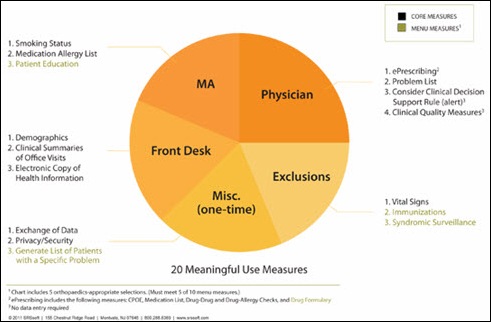
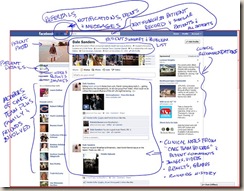
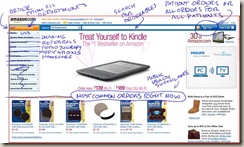
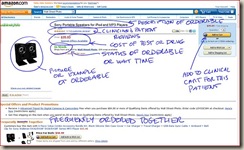
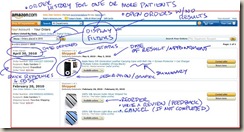
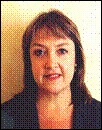



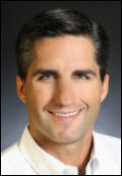

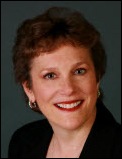

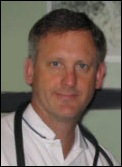
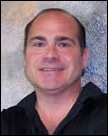


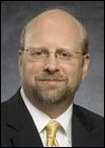
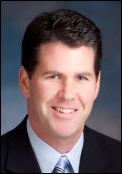

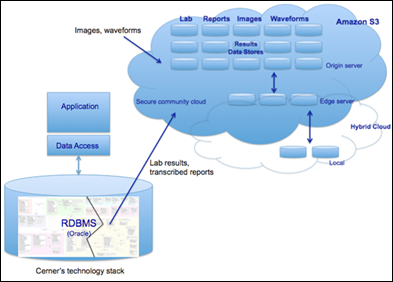





I dont think anything will change until Dr Jayne and others take my approach of naming names, including how much…